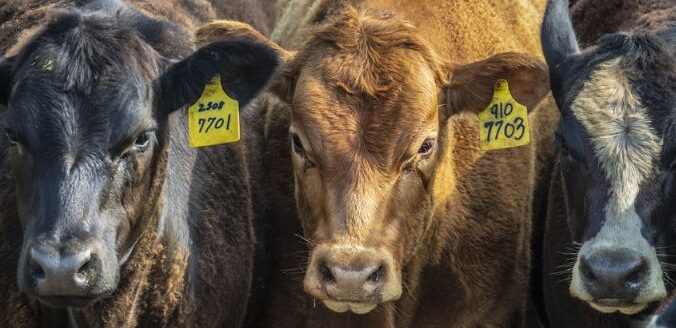Livestock producers should examine drought assistance programs

Drought conditions have hit some Oklahoma livestock producers hard, but help may be available through U.S. Department of Agriculture assistance programs for operations that depend heavily on forage and grazing.
“USDA’s Livestock Forage Program is one with which most Oklahoma producers should be familiar,” said Amy Hagerman, Oklahoma State University Extension agricultural and food policy specialist. “Eligible livestock are grazing animals that get most of their net nutritional energy requirement from grazing of forage grasses or legumes. Drought statistics dictate eligibility requirements and payment levels.”
In addition to beef and dairy cattle, LFP eligible species include alpacas, buffalo, bison, beefalo, deer, elk, emus, goats, horses, llamas, reindeer and sheep. Hagerman recently shared additional insights about drought assistance programs on the agricultural television show SUNUP.
As of Oct. 5, Oklahoma counties with warm season pastures that qualify for LFP assistance are Beaver, Caddo, Canadian, Cimarron, Creek, Grady, Harper, Hughes, Kiowa, Noble, Okfuskee, Okmulgee, Osage, Pawnee, Tulsa, Washita and Woods.
Oklahoma counties with cool season pastures that qualify for LFP assistance are Beaver, Beckham, Carter, Cimarron, Custer, Greer, Harmon, Jackson, Jefferson, Love, Roger Mills, Texas and Washita.
Some counties are only eligible for certain pasture types such as forage sorghum or annual crabgrass.
Producers who feel their specific operations are suffering under qualifying drought conditions are encouraged to contact their local Oklahoma Farm Service Agency office if FSA personnel haven’t already contacted them, said Rusty Humphrey, Kay County FSA executive director.
Drought conditions continue to evolve, so more counties may become eligible.


